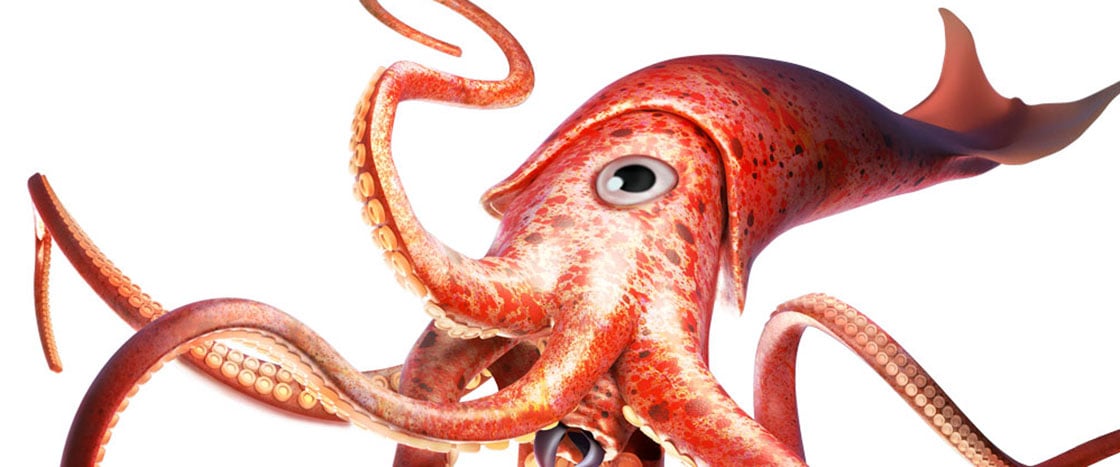On a moonless January night in 2003, a sailor named Olivier de Kersauson was racing across the Atlantic Ocean. He was trying to break the record for the fastest sailing voyage around the world. But suddenly, his boat came to a mysterious halt.
In the darkness, de Kersauson’s massive, 110-foot sailboat shook and rattled violently. The crew ran up and down the deck, shining flashlights into the water, trying to figure out what was going on.
Below deck, sailor Didier Ragot peered through a porthole into the ocean.
Then he saw it: an enormous tentacle snaking around the boat.
The creature was like something out of a horror movie. It was about 30 feet long. Its skin glistened. Most shocking were the long, powerful arms. Each was covered in toothy suckers that left impressions on the sides of the boat. The monstrous creature seemed to be wrapping itself around the boat, which creaked and groaned under the strain.
Just when the crew thought the boat would snap into pieces, everything went still.
The creature was gone.
“I’ve been sailing for 40 years, and I’ve always had an answer for everything—for hurricanes and icebergs,” de Kersauson would later say. “But I didn’t have an answer for this. It was terrifying.”
What the crew claimed they saw was a giant squid. But there was only one problem. At the time, people weren’t sure that giant squid were even real.
It was January 2003. The night was dark. A French sailor raced across the Atlantic Ocean. He was trying to break the record for the fastest sailing voyage around the world. But suddenly, his boat stopped.
The boat shook. It rattled. The crew shined flashlights into the water, trying to see what was going on.
Below deck, one man looked through a small round window into the ocean.
Then he saw it: a huge tentacle snaking around the boat.
The creature was like something out of a horror movie. It was about 30 feet long. Its skin shined. Its long arms were covered in toothy suckers. The creature seemed to be wrapping itself around the boat.
The boat creaked. The crew thought it would break.
Then it was over. Everything went still. The creature was gone.
“I’ve been sailing for 40 years, and I’ve always had an answer for everything—for hurricanes and icebergs,” the French sailor said later. “But I didn’t have an answer for this. It was terrifying.”
What the crew claimed they saw was a giant squid. But there was one problem. At the time, people weren’t sure that giant squid were even real.

